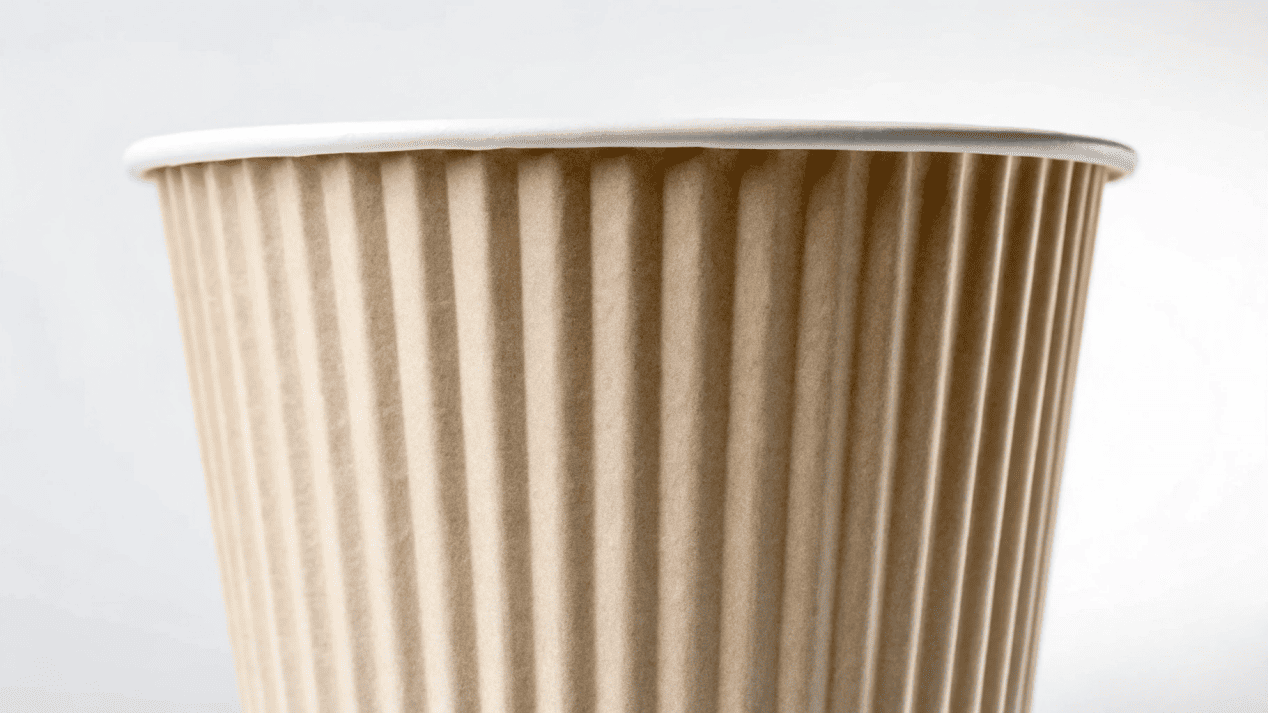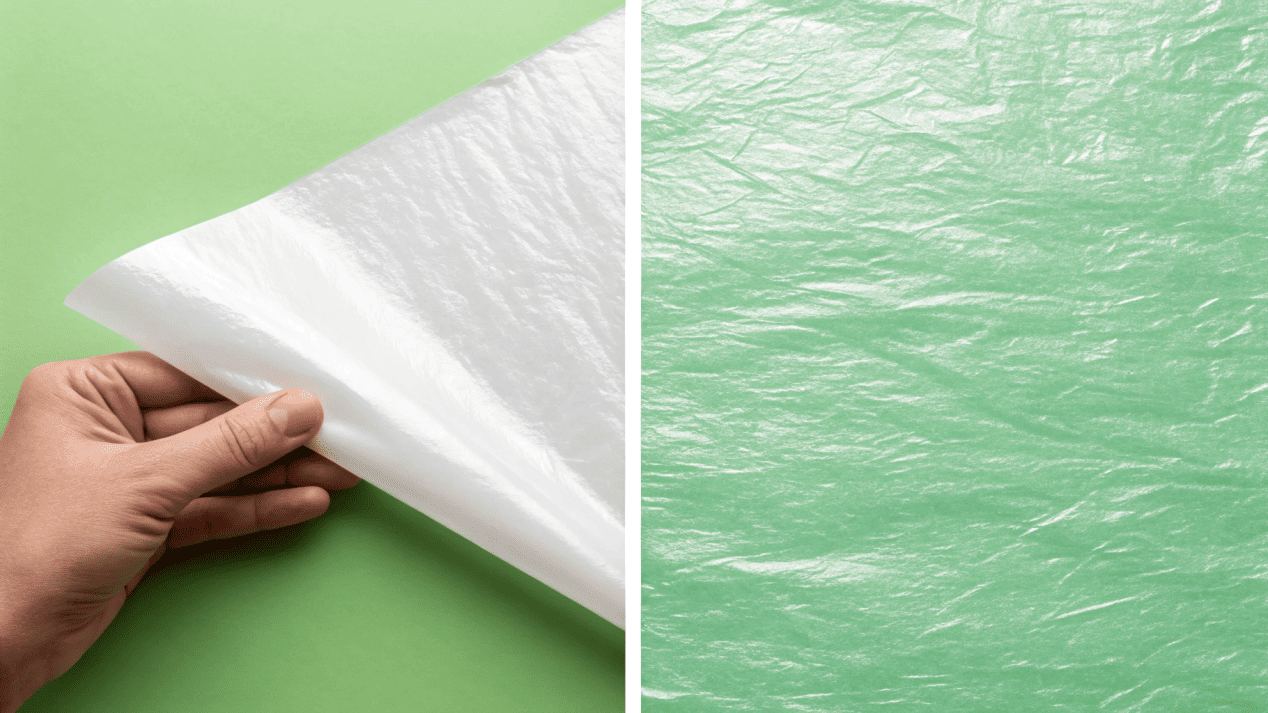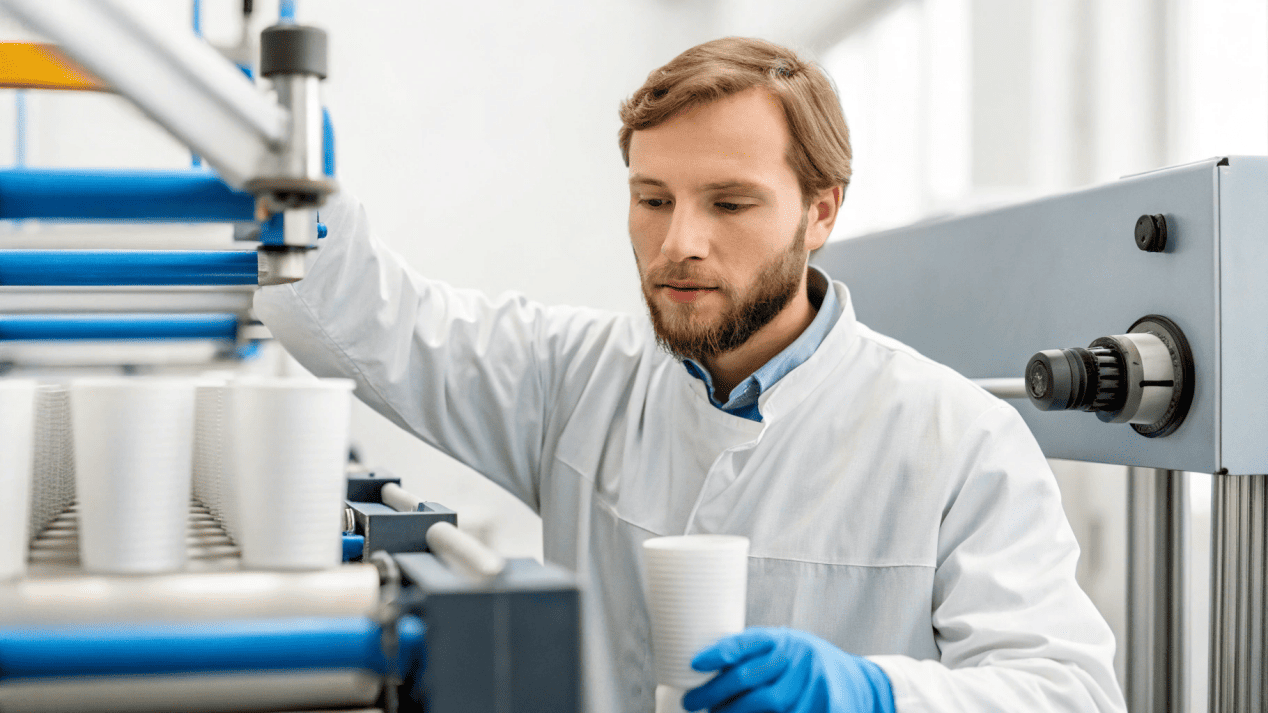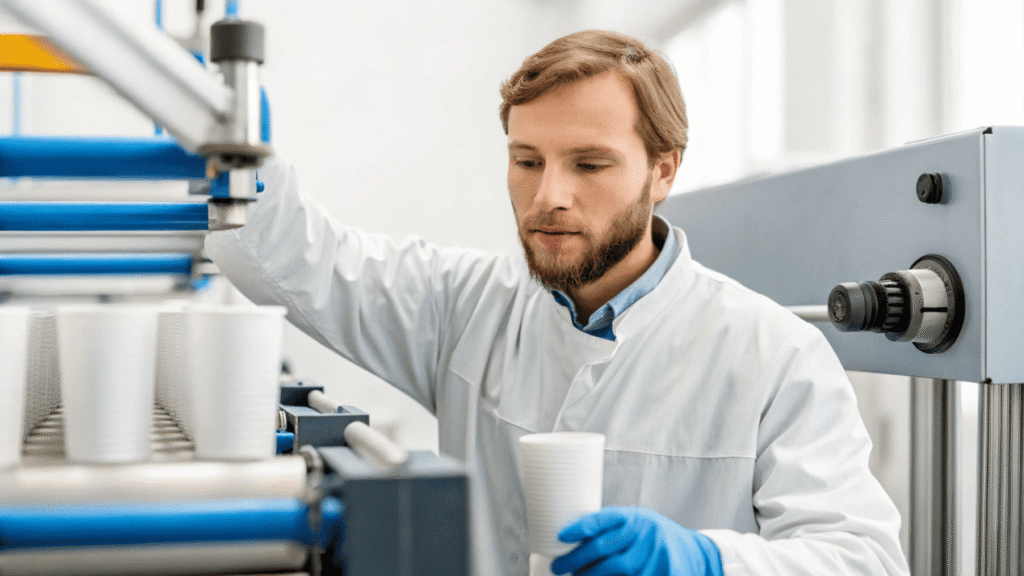You want a sustainable alternative to traditional plastic-lined cups, which are a recycling nightmare. But new technologies are confusing, and you're not sure which claims you can trust.
A water-based coating is a liquid barrier painted onto paper to make it waterproof. Unlike a plastic film, this coating breaks down easily in standard paper recycling mills, allowing the valuable paper fibers to be recovered and reused.

As an engineer, the concept of water-based coating fascinates me. For decades, the industry standard was simple: laminate a thin sheet of plastic film (polyethylene or PE) onto paperboard. It was effective, but it created a recycling problem. Trying to separate that plastic film from the paper fiber is like trying to peel glue off a postage stamp—it's difficult, expensive, and most facilities don't even bother. Water-based coating changes the entire equation. It’s not a separate layer; it becomes part of the paper itself. Let’s dive into how it works and what it means for your business.
How Is It Different From a Regular Plastic Lining?
You hear "coating" and think it's just another layer. How can this be fundamentally different from the plastic film you've used for years? It sounds like just a different material.
A water-based coating is a liquid that soaks into and bonds with the paper fibers. A PE coating is a separate plastic sheet melted onto the surface. This difference is critical for recycling.

The key word here is "water-based." The coating starts as a liquid, a polymer emulsion where water is the main carrier. Think of it like modern house paint. The solid particles (polymers) that form the protective barrier are suspended in water. We apply this liquid to the paper, and as the water evaporates, the polymer particles lock together and fuse directly with the paper fibers. This creates a seamless, integrated barrier. It’s no longer a composite material of "paper + plastic." It's simply "coated paper." This distinction is what makes standard paper mills cheer. They don't need special equipment to strip off a plastic layer; their normal re-pulping process dissolves the coating and releases the paper fibers.
| Feature | Water-Based Coating | Traditional PE Coating |
|---|---|---|
| Form | Liquid applied to paper | Solid plastic film |
| Bonding | Integrates with paper fibers | Laminated on top of paper |
| Recycling | Breaks down in standard mills | Requires special separation |
| Material Type | Coated Paper | Composite (Paper-Plastic) |
How Are These Coated Cups Actually Made?
The concept sounds great, but it must be more complex to manufacture. If it’s a liquid, how do you apply it perfectly and turn it into a cup without issues?
The process involves applying the liquid dispersion, using high-temperature dryers to evaporate the water, and letting the polymers form a solid film. It requires more precision than the older PE lamination method.

Making these cups requires a different approach. I've worked closely with calibrating machinery for this process, and it's all about control. PE lamination is like using a giant glue stick. Water-based coating is more like spray painting.
- Application: A massive roll of paperboard is fed through a machine. The liquid coating is applied evenly using precise tools. This could be a blade, a rod, or a "curtain" of liquid that falls onto the paper. The goal is a perfectly uniform layer.
- Drying: The wet paper then moves through a long drying tunnel. We use hot air or powerful infrared lamps to evaporate all the water from the coating. This has to be done quickly and evenly.
- Curing: As the water leaves, the polymer particles are forced together. They fuse to create the solid, waterproof film that is now part of the paper.
- Conversion: The finished, coated paperboard is then treated just like regular paperboard. We print on it, cut out the cup shapes (blanks), and form them into cups. This final step also requires precision, especially when heat-sealing the seams.
What Are the Real Advantages for My Business?
Sustainability is important, but you need to know the practical benefits. Will this choice actually improve your brand, your operations, and your bottom line? Is it worth the switch?
The biggest advantage is enhanced recyclability, which is a powerful marketing story. It also reduces plastic use and can offer a superior surface for high-quality, vibrant logo printing, boosting your brand's image.

The number one benefit is real-world sustainability. I had a client, a regional coffee chain, who switched to water-based coated cups. They partnered with their local recycling facility to announce that their cups were now "100% recyclable like any office paper." Customer feedback was amazing, and their brand reputation for environmental responsibility soared. This is a story you can't tell with PE-coated cups. Beyond just marketing, there are other solid benefits.
- True Recyclability: These cups can enter the standard paper recycling stream. This is not greenwashing; it's a functional advantage.
- Reduced Plastic Footprint: You are directly replacing a petroleum-based plastic film with a much thinner, more advanced coating. This addresses consumer demand to reduce single-use plastics.
- Compostability Options: Many formulations are also certified for industrial composting, giving you another sustainable disposal path where facilities exist.
- Brand Image: The matte, paper-like feel and excellent print quality make your logo and branding look premium. Compared to the high gloss of PE, it often looks more sophisticated.
What Are the Hidden Problems or Limitations?
This technology sounds revolutionary. But as an engineer, I know every solution has trade-offs. What are the potential downsides or challenges I need to be aware of before investing?
The barrier may not be as robust for extremely long storage or high-acid contents. The manufacturing process is more complex, which can lead to higher costs and a need for finely tuned machinery.

I believe in being completely honest with my partners. Water-based coating is a fantastic innovation, but it is not a magic bullet. You must be aware of its limitations. The primary challenge is that you are replacing a relatively thick, inert plastic film with a very thin, specialized coating. While it’s perfect for serving coffee, tea, and soft drinks, some of the earlier or cheaper formulations might struggle with very oily foods or highly acidic liquids stored for many hours. The barrier just isn't as absolute as PE plastic.
The manufacturing side also presents challenges. The liquid application and drying process demand much tighter controls compared to the old PE extrusion method. The "heat sealing window"—the perfect combination of temperature, pressure, and time needed to form a leak-proof seam on the cup—is also narrower. This means that cup-forming machines must be perfectly calibrated. A factory that is used to PE cups can't just switch materials without retraining technicians and adjusting their equipment. This complexity and the cost of the advanced materials can sometimes make the final cup slightly more expensive.
Conclusion
Water-based coating is a major step towards truly recyclable paper cups. It offers huge sustainability benefits but requires understanding its specific performance limits and manufacturing needs to succeed.
